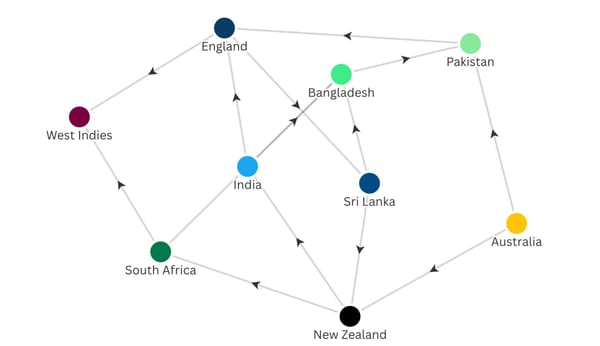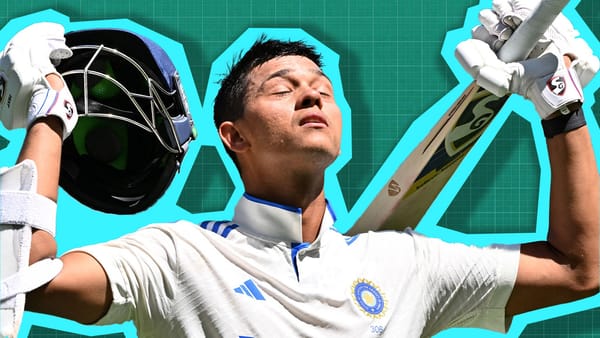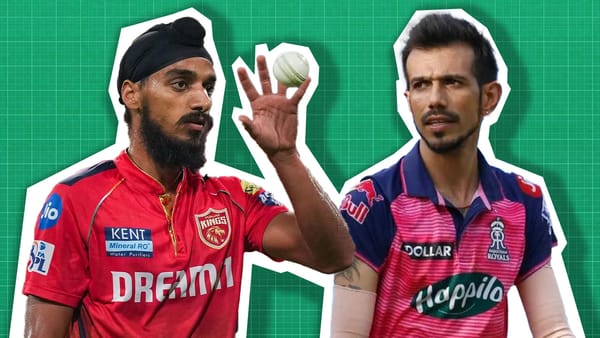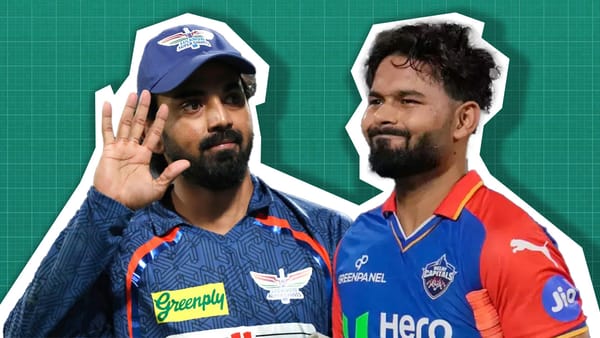The Kookaburra balls and the missing 38 runs
Something strange is happening at the start of limited overs matches.
Kookaburra is the international cricket ball. I know you are thinking about SG or Dukes balls now, and you may even think they are better. But we don't use either of them much.

The Kookaburra is the international cricket ball, even if it is a small sports manufacturer from Melbourne that makes Australian rules footballs, tennis racquets and hockey equipment.
They are technically two Test balls because they also bought the Reader brand in the UK, which used to produce them for England. They also have another international ball, the Dimple Elite hockey ball.
According to their website, they have over 200 staff. That is not a lot of people, especially when you factor in Hockey, footy and Tennis. Compare it to Rawlings, the baseball manufacturer. They have 1200 - and even they aren't that big.
It is also worth noting that Rawlings is co-owned by Major League Baseball. And so they have a say in what happens with the balls. They can game the ball directly if they want more or less runs. This brings its own problems (ask baseball fans about the ball-led conspiracies) but allows Rawlings/MLB to focus on quality. They aren't worried about going out of business or market pressure. The people who buy their products own them. They are safe and secure to make the best balls possible or ones that allow for plenty of home runs.
Outside of pitches, nothing impacts the game more than balls in cricket. We don't regulate either, so our sport depends entirely on local curators and a small family-run company with little to no oversight from the game itself. Cricket is a billion-dollar sport with amateur management of the actual product.
This is a deeply unserious sport.
Below is the entire history of modern cricket by averages until 2020.

From the moment that ODI cricket really becomes a thing, and then for the next forty years. As is apparent, besides a few small moments where the lines meet up, red ball batting has always been so much better.
And of course that makes sense. In ODI cricket, you're attacking more, using the air, and slogging at the end. But you can see that after all those years of the red ball batting averaging so much more, the white ball batters finally caught up. And then they went ahead. We know there was a reason because everyone stopped making runs in Test cricket. In ODIs, it was when top-order players started batting very long.
It was such a trend that I did an entire podcast on the fact that white ball batters were beating their Test friends for the first time ever.
Some of this was the natural evolution of white ball cricket, more runs and all that.
But then Australia hosted Zimbabwe and New Zealand, and this person sent me a tweet about whether the balls hand changed.
@ajarrodkimber have the Kookaburra manufacturers done something incredible with the ball or is the bowling madness so far because of the pitch?
— Zain (@cricket_bowl) 9:53 AM ∙ Sep 8, 2022
And I figured they were doing what we all do, just seeing some wickets and thinking there was a new trend. Except, they were onto something.
Since the start of 2021, ODI batting has really dropped off. It was not exactly what I was expecting, but it's one hell of a slide.

They are not all-time lows because white ball cricket only just got this good with averages per wicket. But it was trending up when suddenly it fell apart.

And while I am talking about average, the same drop happened in runs per over. It's the lowest year since 2010. ODI cricket back in those days was almost a different sport, so going back to that kind of rate is quite a drop.
So, we can agree that something went on around 2021 because that is when the runs started disappearing. But I have a hunch, and so I checked fast bowling because that is what I felt had changed.

And it was clear that quick bowlers are on top in a way they haven't been in almost 20 years. It was 2003, when the bowling average was this low from the quicks. But even so, I think it should be clearer than this.
I wanted to look at the exact moment that ODI cricket had its boom, from 2015 onwards. But more importantly, hone in on what I thought the problem might be, the first ten overs. Because if you lose wickets there, that is not much coming back. And you can see it's clearly not going well at the top.

So what has caused all this? Because without belabouring the point, ODI cricket was going great, even as Test batting fell into the toilet. If you think about the theory behind BazBall, it makes sense. Especially in England, where the Test batting was terrible, the white ball hitting was outstanding. So you just use the white ball hitting to hack red ball. But that doesn't work if the white ball batting is starting to have the same drop.
And I don't have an excellent answer for all of this. But I still had a slight hunch. For that to be true, I wanted to look at the T20 numbers because while I haven't seen anyone bring it up, for me to be correct, it had to be in the 20 over format too.
This is T20, and you can see again, that in the last two years, we've had the same kind of drop as in ODIs.

I don't think this is a coincidence. And just to show it even clearer.
Here is the seam bowling average in the first ten overs of ODI compared to the first 4 of a T20. Basically, the first 20% of both matches. But I looked at five overs, too, as that is how old an ODI ball is, because we use two of them.

Either way, the pattern was there for each of them. The very new ball is doing damage, and over the last two years, that has translated into an overall drop in white ball batting.
I am not sure I know exactly what has happened, but I have a solid idea. And it's about the ball, the problem is, it is not easy to prove.
First I need to explain something about the Test ball. Over a long period, the Kookaburra ball was derided. They went soft early, the seam wasn't very helpful, people made a lot of runs, and no one liked them.
At the same time, the Dukes ball got more popular, to the point where it was also used in the West Indies. Most people believed that not only was the Dukes better, but it ultimately produced more enjoyable cricket to watch. But the more significant move was when Shield Cricket used it. That was a big deal because Kookaburra is an Australian company and also the ball that international cricket uses the most.
So this led to Kookaburra trying to improve their ball. Market pressure and all that. Sometime around 2017, there were trials of a new kookaburra ball. There was even an article about them putting extra lacquer on the ball. I don't think they did. But in late 2020, they released a new Kookaburra with a reinforced seam. This made the entire ball firmer and importantly, meant the ball would move around more. Fixing the Kookaburra was well overdue, and it was essential.
But that was the red ball. The white ball's problems were completely different. The reason ODIs need two of them has nothing to do with the seam. It's because leather can't be dyed white, so they have to be painted, and it peels off. You would think that's the thing to try fix, because, at the moment, they are charging everyone for double the number of balls they should be.
Instead, it appears like they changed the seam. However, I don't have evidence of that. I don't even know for sure if the white ball was reinforced. And there is an excellent reason for that; Kookaburra has never said anything publicly about this that I could find. And so I contacted them via social media and their publicly listed email but heard nothing from them. So I am trying to piece this together from Dan Brettig's reporting and a few things I have heard from cricket boards.
As far as we can tell, the first Test that used a reinforced seam was a pretty well-known match, where India was dismissed for 36 at Adelaide. But to work out exactly when and where these balls were first used is almost impossible. Because even if we knew when they were first made and sold, we don't know when they were used. In fact, no one tracks what balls are used until something goes wrong. Let's say there was a bad batch of balls. It takes ages to work it out as it's hard to track.
But we do know that Adelaide Test was certainly when it started. And we know that from then on in, the white ball average drops, especially up front. There was talk about new balls around 20/21. You heard it with the IPL especially. But a lot of that discussion was on the extra lacquer. And that may be part of the issue, as it could affect the amount of swing we would see upfront.
However, there is a glaring issue you can see upfront. Our old friend the wobbleball has come into limited overs in the last two years. Before that, teams didn't use it much in ODIs or T20 because the seam wasn't good enough. But as I said earlier, that is exactly what they fixed.
Now is it possible I am seeing wobbleballs and batting pandemics where there are none, yes. But what if I am right, and a company who was reacting to market pressure to their red ball went and made it more like their main competitor, and then copy and pasted that design over to white ball which lead to us a shift in the game which we didn't need to have.
Kookaburra were trying to make more entertaining cricket balls, even if it was about keeping their deals, not because of a love of the game.
The real issue here is that a company with so much power is so small and susceptible to the market, and they have no real official ties to the ICC - other than they are a customer. And because they made a change - our game has been affected. And not only has no one noticed, but also there is no one actually in charge.
And we have seen these kinds of things before, like when the ICC brought in DRS before they had tested what was essentially TV technology. Or the shockingly low research and development they did on the pink ball will eventually produce billions of dollars if they perfected it, but they didn't.
Now they have announced that Hybrid pitches will be available for T20Is if both teams agree. This is great for women's and associate cricket and could help tournament play. However, from what I can tell the research was Gary Stead being part of the cricket committee, as New Zealand used them in the Netherlands. The Commonwealth Games had them, though I am not sure how much opinion was taken from the players. Most cricketers I have talked to don't seem to like them, but they also moan about most new things. The ICC seems to have done the absolute bare minimum of research and development. Do the ICC, or anyone, have any regulations for what a Hybrid pitch is. I haven't seen that anywhere.
Oh, and what about the white balls. How did Kookaburra become the automatic choice of limited overs only a couple of years after they became the test ball in Australia? Some of it was just that they offered discounts, the other was that they really did try to perfect the white ball. And even if they didn't get there, they already had the market.
You can learn a lot by reading up on Snehal Pradhan’s seminal piece on Kookaburra balls.
These decisions play out on the field, and from my time talking to people about Cricket Committee meetings, the people making the decisions often don't dwell on specifics, use data, or even just ask the right questions.
And so what does that mean to us? Well from that golden period of ODI batting we have lost almost three and a half runs per wicket.
The earlier period had 272 runs being scored in the first innings of ODIs if the full overs were bowled, dropping to 251. Ofcourse that doesn't account for rain or teams being bowled out.
In real terms the average first innings total was 225. Now some of that would be effected by rain and teams being dismissed. So if we split the difference, we are missing around 19 runs per innings. So 38 a match.

That is a big difference, and you might say, well in ODIs, and maybe even T20, we needed bowlers to get back on top. What has happened is that white-ball cricket has been improved. But that wasn't done on purpose.
That's the real point here. And so what do we have, this drop in runs, probably from early wickets, due to a small fairly secretive company trying to fix another product and no cricket body really aware. And even if the ICC knew, they would be able to do very little, as they are just another client of this company.
This is an unserious sport.




